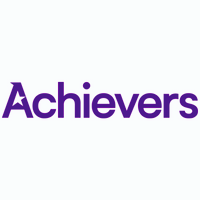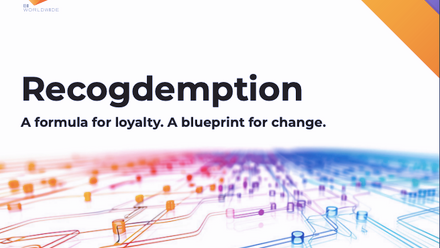Low-cost ways to recognise employees effectively
With budgets tightening and costs rising, many employers are asking how they can continue to recognise and reward people meaningfully without breaking the bank?
The good news is that great recognition doesn’t depend on lavish budgets. When it’s sincere, consistent, and well-timed, even small gestures can have a lasting impact on morale and loyalty.
Why recognition matters — and why it doesn’t have to be costly
Recognition continues to play a pivotal role in employee motivation, performance, and retention. Research from the CIPD shows that non-financial recognition can complement - or even outperform - financial incentives when designed well.
Similarly, findings highlight that the symbolic and timely value of recognition often matters more to employees than the monetary element.
In the UK, however, there’s still a clear gap between expectation and experience. A People Management survey found that while 70% of employees want recognition from senior leaders, only 42% feel they receive it regularly. This presents a significant opportunity for leaders to stand out by being more consistent and deliberate - proving that meaningful recognition doesn’t depend on large budgets, but on genuine intent.
Make recognition part of everyday culture
Recognition loses its impact when it’s treated as a once-a-year initiative rather than an on-going habit. When appreciation becomes part of everyday conversation - from casual thank-you messages to public shoutouts - it signals a culture that genuinely values its people.
Encouraging frequent, informal recognition doesn’t require new systems or extra spending. It’s about leaders and colleagues noticing contributions as they happen and taking a moment to acknowledge them.
To build momentum, create small, visible rituals of appreciation. Here are a few cost-effective ideas that can make employees feel seen and appreciated:
- Spotlight awards: Celebrate great work with small, symbolic rewards - a certificate, an extra hour off, or the chance to lead a project they’re passionate about.
- Experience-based gestures: Offer meaningful perks such as lunch with a senior leader, a learning opportunity, or a charity donation in the employee’s name.
- Peer nominations: With the help of recognition software, let colleagues nominate one another for moments of collaboration, creativity, or kindness, ensuring recognition flows in all directions.
- Local partnerships: Partner with nearby stores or community venues to provide small perks or shared experiences that bring people together.
What makes these gestures powerful isn’t their price tag - it’s their personal relevance and visibility. When recognition feels genuine and inclusive, even the simplest acts can inspire real pride and connection.
Fairness, consistency and visibility matter
Recognition only builds trust when it’s fair, consistent, and transparent. If appreciation feels uneven or reserved for a select few, it can quickly backfire - creating frustration instead of motivation.
A simple starting point is to make recognition everyone’s responsibility, not just leaderships. Encourage teams to celebrate across departments, roles, and shift patterns so that good work is visible everywhere. Managers can help by tracking who’s been recognised and ensuring praise reaches all corners of the organisation.
If you already have a formal recognition or rewards platform, use its data and insights to spot any blind spots. Reviewing who gives and receives recognition can help identify patterns, ensuring inclusivity across gender, tenure, or function.
Equally important is visibility. When recognition is shared publicly - in town halls, newsletters, or team channels - it reinforces values and reminds people what great work looks like. Fairness makes recognition credible; visibility makes it contagious.
Empower managers to lead by example
Managers have the greatest influence on how recognition is experienced day to day. When they model gratitude consistently, it sends a clear message that appreciation isn’t an initiative - it’s a leadership value. To help managers embed that mindset:
- Lead with intent: Recognition should start from genuine observation, not obligation. Encourage managers to notice effort, creativity, and collaboration - not just results.
- Set the rhythm: Make recognition a standing agenda item in team catch-ups, quarterly reviews, or performance conversations to keep it front of mind.
- Connect recognition to values: When thanking someone, link the behaviour back to company values or goals - reinforcing what success looks like in action.
- Recognise across teams: Encourage managers to spotlight achievements beyond their direct reports to build a culture of shared success.
- Use existing tools effectively: If a recognition or rewards platform is in place, managers should use it actively and visibly. Their participation normalises appreciation and encourages others to follow.
When leaders show consistent gratitude - through words, actions, and visibility - recognition becomes embedded in the organisation’s DNA, strengthening trust and connection across every level.
Measure, adjust and evolve
Measuring recognition doesn’t have to mean complex dashboards or detailed analytics. Even simple check-ins can reveal how valued employees feel and where improvements are needed.
- Listen often: Add short questions to pulse surveys such as “I feel appreciated for my work” to spot early trends.
- Gather feedback directly: Ask in one-on-ones, team meetings, or exit interviews whether people feel recognised - and what forms of recognition mean the most.
- Track activity: Keep a basic record of recognition moments by team or department to see patterns and ensure balance.
- Review and refresh: Evaluate your recognition approach regularly. Retire anything that feels stale and reintroduce new ways to celebrate success.
By measuring what matters (even informally), organisations can adapt their approach over time, ensuring recognition stays relevant, inclusive, and impactful.
Recognition isn’t a cost - it’s a strategy
Recognition isn’t reserved for large organisations with big budgets. Any business, regardless of size, can use it to strengthen connection, reinforce values, and boost retention. What matters most isn’t the cost - it’s the consistency, sincerity, and timing behind every gesture.
When appreciation becomes a regular part of working life, it transforms culture from the inside out. Starting small, recognising often, and ensuring fairness can create a workplace where people feel genuinely seen and motivated to give their best. Recognition is far more than a “nice to have” - it’s a simple, sustainable way to build loyalty, morale, and a lasting competitive edge.
Supplied by REBA Associate Member, Achievers
Achievers is an enterprise Recognition and Reward software with non-monetary and monetary recognition and a global reward marketplace.








